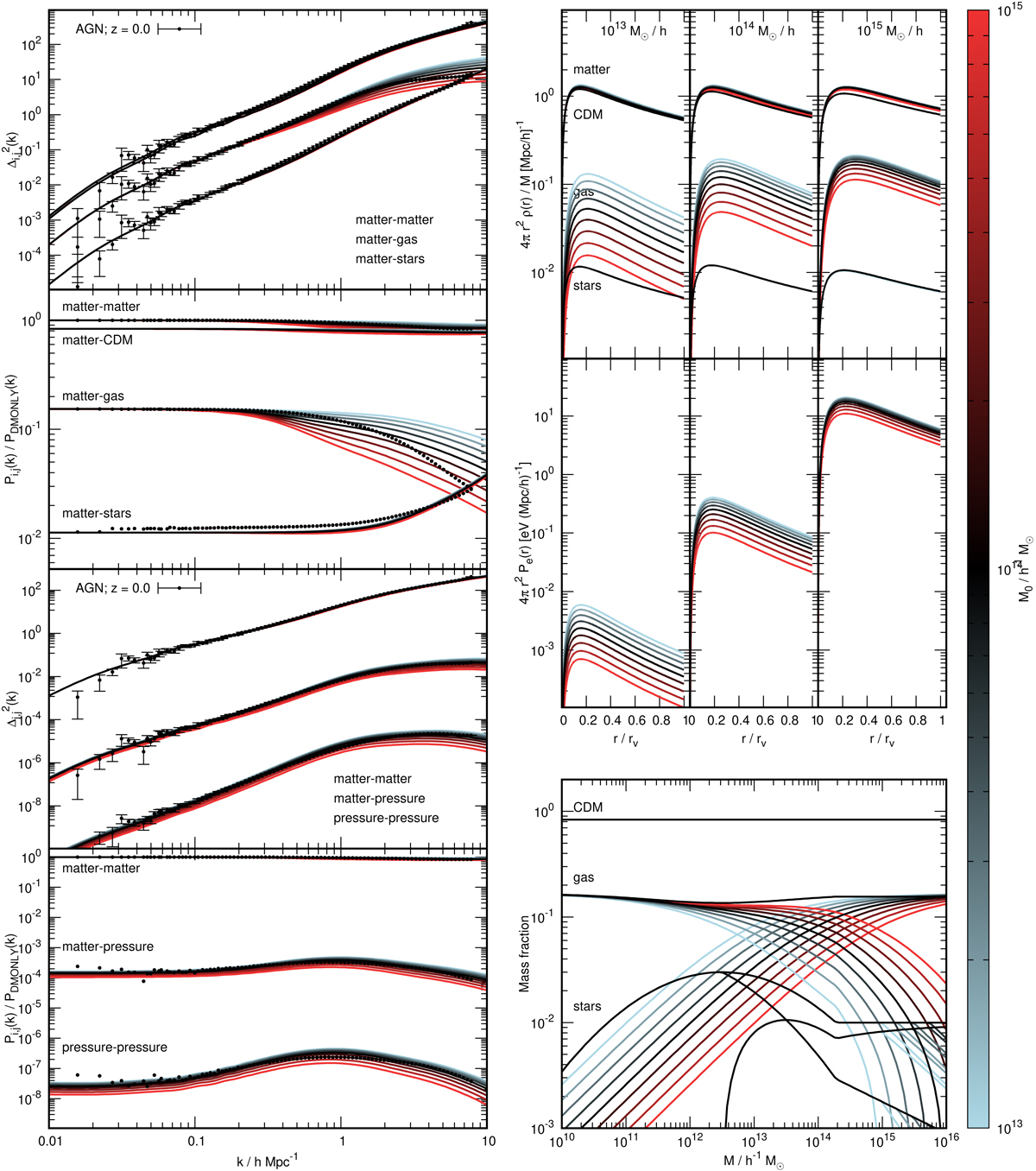Fig. C.3.

Same as Fig. C.1 but for M0, which governs the halo mass below which haloes have lost most of their gas. As can be seen in the bottom-right panel, changing M0 changes the split of gas between the bound component, which dominates high-mass haloes and the unbound component, which is the case for low-mass haloes that have jettisoned most of their gas. The effects of this on the bound halo profiles can be seen in the top-right panel. Decreasing M0 adds to the amplitude of the gas density profiles and this boosts power in power spectra involving gas. We see a similar, but more limited effect on spectra involving the electron pressure. This limitation arises because low-mass haloes are lower temperature, so contribute much less to spectra involving the electron pressure than they do to those involving the gas density. There is also an overall amplitude affect on the pressure spectra because the unbound gas is taken to have a fixed Tw = 106 K that contributes power on large scales.
Current usage metrics show cumulative count of Article Views (full-text article views including HTML views, PDF and ePub downloads, according to the available data) and Abstracts Views on Vision4Press platform.
Data correspond to usage on the plateform after 2015. The current usage metrics is available 48-96 hours after online publication and is updated daily on week days.
Initial download of the metrics may take a while.


